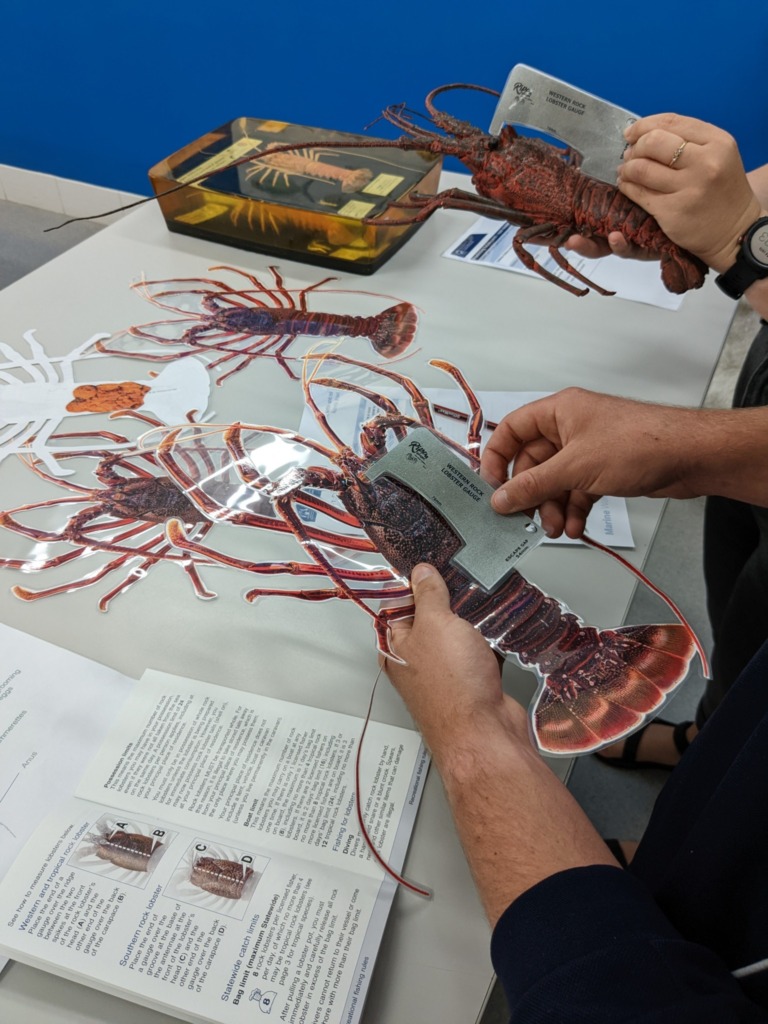In this activity, students will learn about the biology of the iconic Western rock lobster, how Western rock lobster are managed by fishery scientists and DPIRD, and how currents and other environmental factors influence this valuable fishery.

Duration: 1 hour
The Department of Primary Industries and Regional Development (DPIRD) works to protect the sustainability of natural resources and ecosystems of Western Australia for present and future generations. Western Australia’s recreational and commercial rock lobster fisheries are key fisheries, both economically and socially, that are managed by the Department.
Several protective measures are used to ensure the sustainability of Western Australia’s rock lobster populations including a management plan, rules, and licences for both commercial and recreational fishers, a seasonal closure, size limits, protection for any females in breeding condition and controls on the number of pots and on the gear used, such as pot size limits.
An extensive scientific program supports the management of the Western rock lobster fishery. The program not only collects data on commercial and recreational catches and fishing activity, but also includes several independent monitoring programs that look at the abundance of the lobster breeding stock, the settlement from year-to-year of juvenile lobsters, and environmental factors that may affect breeding success and survival. This research allows fisheries scientists to predict catches up to four years in advance.
A key to predicting catches is the annual sampling program, which looks at the abundance of late larval stage lobsters (puerulus) settling on inshore reefs along the west coast between August and January each year. Past research has shown, in years when the Leeuwin Current is strong (associated with La Nina events), levels of puerulus settlement have been high, resulting in high catch rates three to four years later. In years when the Leeuwin Current is weak (El Nino events), associated catches are usually lower.
In this excursion, students will be given a brief presentation which explains the biology, research, and management strategies utilised by DPIRD. Students then complete activities that will enable them to:
- Describe the environmental factors that affect the population of Western rock lobster over time.
- Identify the sex of rock lobster based on their external morphology.
- Measure the carapace of a rock lobster to determine whether it meets the minimum size limit.
- Explain the sampling method used by fisheries scientists to determine the number of puerulus and describe how this method is standardised to ensure the reliability of the puerulus counts collected.
Describe how fisheries management practices, such as seasonal closures and size and bag limits, ensure the sustainability of WA’s Western rock lobster fisheries.
Cost $5.00 per student
Pre-excursion and post-excursion resources:
You may wish to use the related resources below prior to or following your excursion to further explore the topics covered in this excursion with your students.
